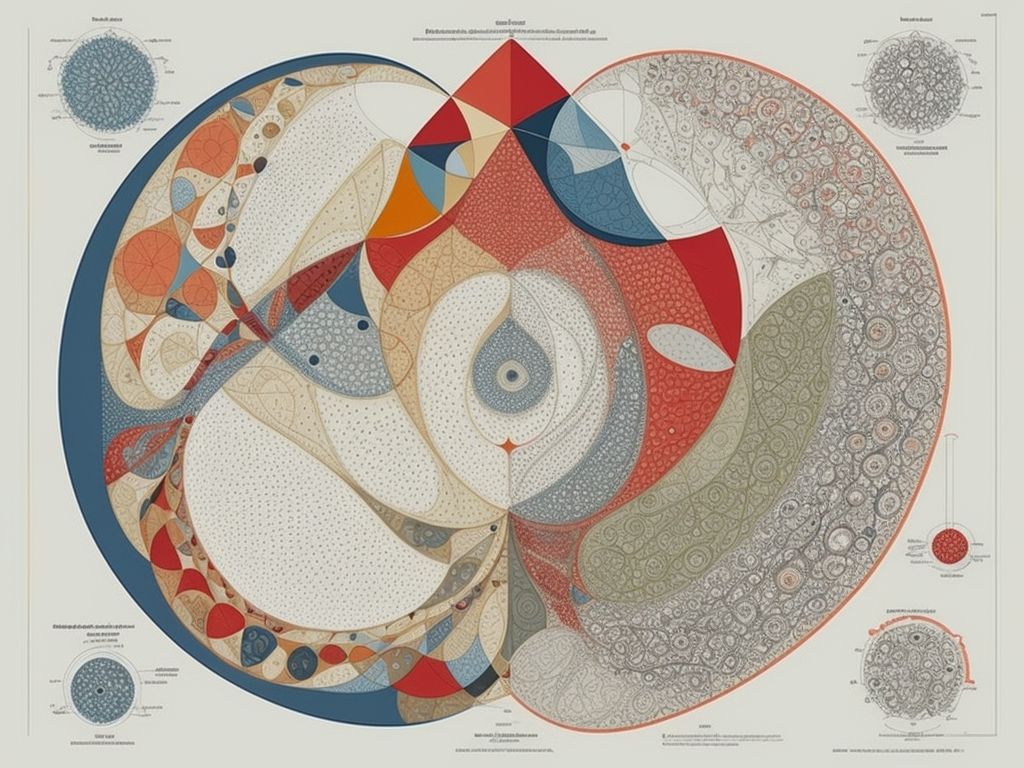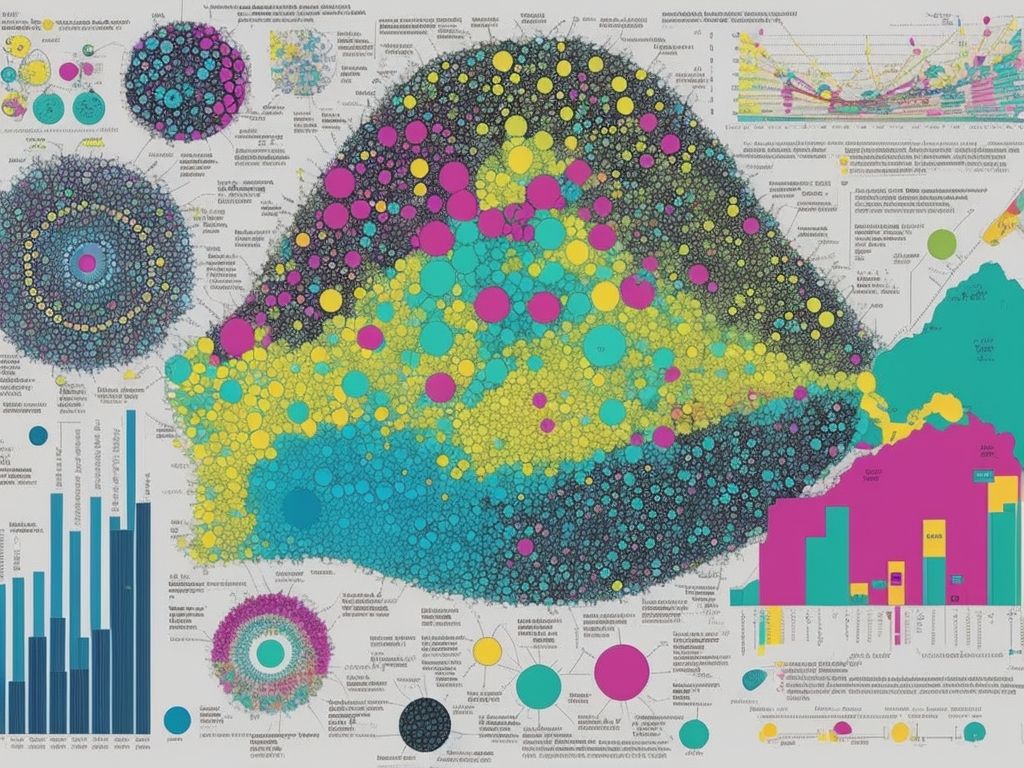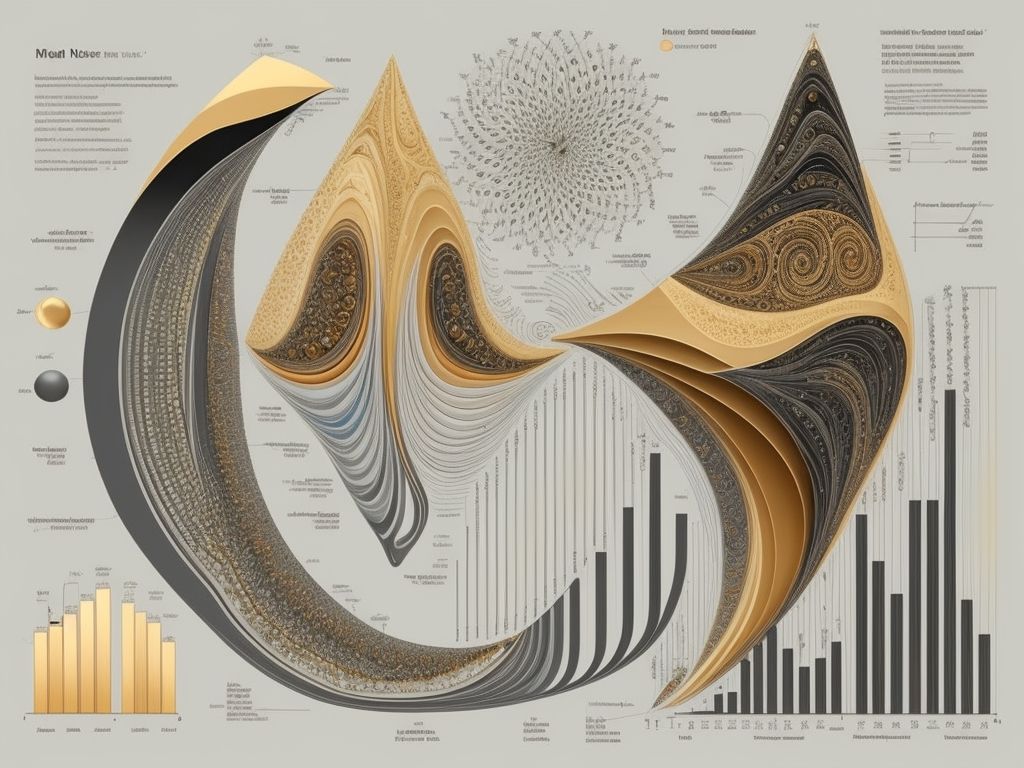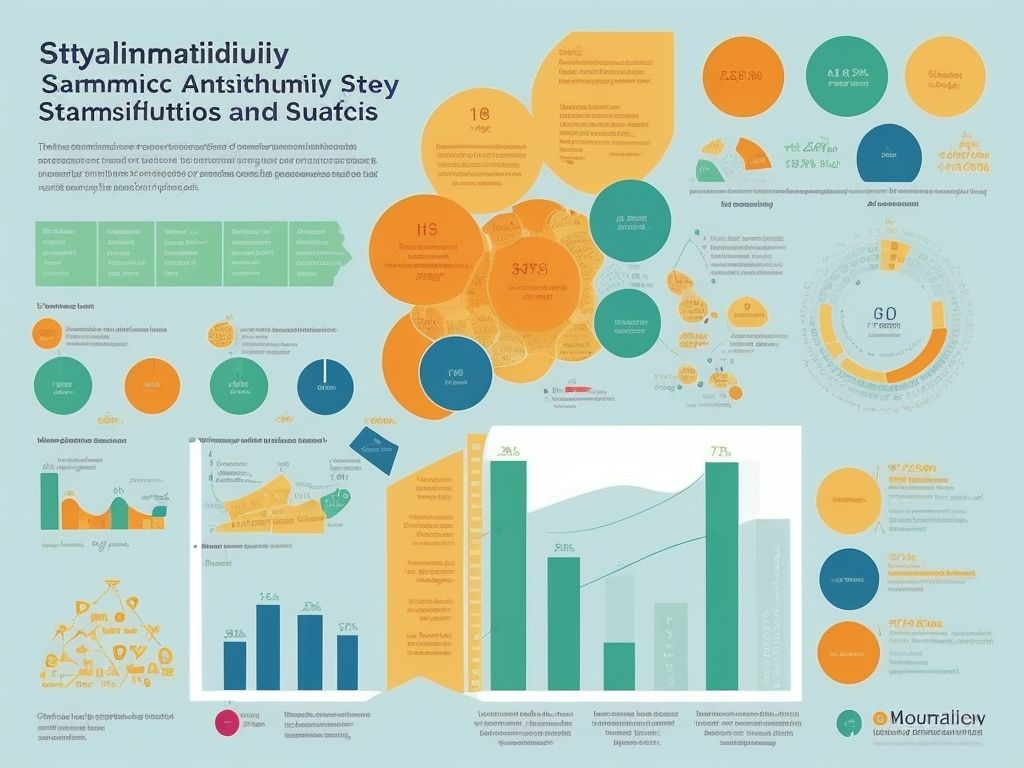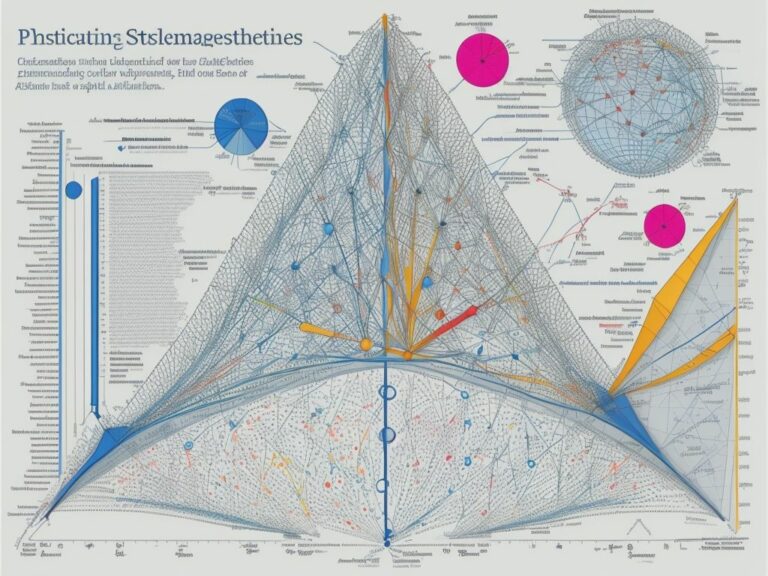Exploring the Range in Statistics
The range is a statistic that helps us explore data spread. To get it, we subtract the lowest value from the highest value in a dataset. Knowing the range helps us find out how much values differ. This can be helpful when comparing datasets or looking at trends over time. The range gives us an easy yet strong tool to understand data diversity.
For more insights, we can look at outliers – very high or low values. Removing them can give us a better representation of the typical range. We can also break down the data into smaller groups based on characteristics, such as age or location. This way, we can find out how different factors affect the range.
In addition, we should consider other measures of dispersal with the range. The range only tells us about value spread, not how they are distributed around an average. Measures like standard deviation and interquartile range can complement our understanding and give us a fuller picture of variability in the data.
Exploring the range gives us useful information about data spread and variability. By looking at outliers, subsets, and other measures of dispersal, we can further increase our understanding and interpretation of statistical findings.
Definition of Statistics
Statistics is a field of study that looks at collecting, analyzing, interpreting and presenting data. It uses mathematical methods and techniques to pull meaningful insights from numerical data. By studying stats, researchers and professionals can recognize trends, patterns, and relationships in many different disciplines.
The two main branches of stats are:
- Descriptive stats focuses on summarizing and presenting data by using measures like mean, median, mode, and standard deviation. This branch helps us understand a dataset without making any assumptions.
- Inferential stats goes beyond descriptive and allows us to predict or infer about a population based on a sample. This includes hypothesis testing, confidence intervals, and regression analysis. We can draw conclusions about a bigger group based on a smaller set of data.
To guarantee correct and reliable statistical analysis, it’s important to carefully design experiments and surveys for gathering relevant data. Random sampling techniques can reduce bias and increase the representativeness of the data.
It’s also vital to use suitable statistical methods for analysis depending on the type of data and the research question. Selecting the right statistical test gives meaningful results that accurately reflect the reality being looked into.
Interpreting statistical findings properly is crucial for drawing valid conclusions. It needs an understanding of probability theory and critical thinking skills to avoid misinterpretations or incorrect conclusions.
Overall, statistics is essential across many fields such as economics, psychology, healthcare, social sciences, business analytics, and more. It’s used in decision-making in businesses and governments worldwide.
Importance of Statistics in Various Fields
Statistics is an essential tool in many areas, used for informed decisions based on data analysis. It reveals patterns and trends which can affect decision-making processes. In business, it helps with market research, sales forecasting, and understanding customers. In healthcare, it assists with clinical trials, disease surveillance, and epidemiological studies. Additionally, it is key in social sciences for sociological surveys and population studies. Its importance cannot be overstated as it helps professionals in different domains understand their field.
Moreover, it is vital to economics. Economists depend on statistics to analyze economic data for policymaking and predicting economic trends. It also benefits sports teams, helping them analyze players’ performance, strategize, and make decisions during games. Government bodies use it to create policies and evaluate existing policies’ effects on society.
Besides these applications, statistics is extremely influential in scientific research. Every step of research needs statistical analysis, from analyzing results to drawing conclusions through statistical tests. Statistical tools help scientists understand their findings and quantify any uncertainty.
Considering its applications and value across different fields and professions, it is important to grasp basic statistical concepts. Whether you are in business, healthcare, or any other area where decisions are based on data analysis, knowledge of statistics gives you an advantage.
Therefore, don’t miss the chance to improve your skills by learning various statistical methods and techniques. Proficiency in statistics will not only improve your problem-solving skills but also let you make decisions backed up with sound analytical reasoning.
Different Types of Statistical Analysis Techniques
Statistical analysis techniques are an essential tool for understanding and interpreting data. They provide valuable insights and help make informed decisions. By using various statistical methods, researchers can study data sets and draw meaningful conclusions.
Here is a table of different statistical analysis techniques:
| Technique | Description |
|---|---|
| Descriptive Analysis | Summarizes and describes the main features of a given dataset |
| Inferential Analysis | Draws conclusions from a sample to make assumptions about a larger population |
| Regression Analysis | Examines the relationship between dependent and independent variables |
| ANOVA | Analyzes variances between multiple groups or treatments |
| Hypothesis Testing | Determines if there is enough evidence to accept or reject research hypotheses |
| Time Series Analysis | Studies data collected over regular intervals to identify patterns over time |
More unique statistical analysis techniques exist. Survival analysis looks at the time until an event, such as survival rates in medical studies. Multivariate analysis looks at multiple variables at once to explore complex relationships. Factor analysis finds the underlying factors that explain variance in a dataset.
Pro Tip: When doing statistical analysis, it is important to pick the right technique based on your research objectives and data characteristics. Consulting with experts or statisticians can improve the accuracy and reliability of your results.
Commonly Used Statistical Tools and Software
Statistical tools and software are vital for data analysis and decision-making. They help researchers, analysts, and statisticians to explore, analyze and interpret data. Plus, they provide a wide range of features for data visualization, hypothesis testing, regression analysis and more.
The table below shows some common statistical tools and software:
| Tool/Software | Purpose |
|---|---|
| SPSS | Statistical analysis and modeling |
| Excel | Data management and basic analysis |
| R | Statistical computing and graphics |
| SAS | Advanced analytics |
| Python | Data manipulation and visualization |
SPSS is well-known for its comprehensive statistics, while Excel is popular for its simplicity. R is loved by programming fans since it has many packages for advanced statistical computing. SAS is mostly used in industries such as healthcare and finance. Python is also popular as it can handle large datasets and data manipulation libraries.
These are just a few from a wide range of statistical tools available. Each one has its own strengths and applications, so you must choose the one that suits your needs.
Recently, open-source statistical tools like R and Python have gained popularity due to their expansive libraries. They enable researchers to do complex analyses quickly without paying license fees.
The 2020 KDnuggets survey found that 45% of respondents used R as their primary analytics tool. This indicates the growing recognition of open-source software among professionals involved in statistical analysis.
Real-World Applications of Statistics
Statistics have various real-world applications. They help professionals understand complex data sets, spot patterns, and predict future trends. This is very useful for businesses, research, governments, healthcare, and more.
Here is a table of examples:
| Domain | Application |
|---|---|
| Marketing | Market research and customer segmentation |
| Finance | Risk assessment and financial modeling |
| Healthcare | Clinical trials and epidemiological studies |
| Education | Assessing student performance |
| Manufacturing | Quality control and production analysis |
This is just the beginning. Statistics are also used in law enforcement, environmental policies, weather forecasting, and sports performance analysis. They can greatly improve our lives.
When applying stats, follow these tips: get good data, choose the right techniques, and keep models up-to-date.
Challenges and Limitations in Statistics
Statistics can be tricky- there are various challenges and limitations to take into account. These can range from data collection to analysis techniques and interpretation. To illustrate this, let’s look at the table below:
| Challenges | Limitations | Solutions |
|---|---|---|
| Data Collection | Sample size | Random sampling techniques |
| Analysis Techniques | Assumptions | Robust methods of analysis |
Data collection can be difficult. Maintaining sample size is key, as biased results or limited generalizability can arise. To combat this, random sampling techniques are often employed.
Analysis techniques also have their own challenges. Assumptions made during analysis can lead to inaccuracies- robust methods can help in this case.
These challenges and limitations are a mere sampling of the complexities of statistical work. Each study can have its own hurdles to overcome.
Updating yourself on new developments in statistics is essential for tackling these issues effectively.
To sum up, it’s important to be aware of the difficulties in statistics so accuracy and reliability can be ensured. The National Institute of Standards and Technology (NIST) has noted that statistical analysis has been fundamental in improving precision in scientific fields.
Conclusion
Statistics need exploration of the range. Analyzing the full data can offer insights for making informed decisions. Examining upper and lower bounds shows outliers, variation, and spread.
Diving deeper reveals patterns, trends, and distribution. It enables us to make accurate predictions. The extremes give a comprehensive understanding.
Investigating the range in stats helps identify any gaps or limitations in data collection. Are we capturing a representative sample, or is there bias? Examining the range guarantees analysis based on reliable information.
Frequently Asked Questions
1. What is the range in statistics?
Range in statistics refers to the difference between the largest and the smallest values in a dataset.
2. Why is the range important in statistics?
The range provides a simple measure of the spread or dispersion of data. It helps to understand the variability within a dataset and identify the maximum and minimum values.
3. How do you calculate the range?
To calculate the range, subtract the smallest value in the dataset from the largest value. This gives you the absolute difference between the two extremes.
4. What are the limitations of using the range in statistics?
The range only takes into account the two extreme values and doesn’t consider the entire dataset. It can be affected by outliers, skewness, and the number of data points, which may not provide a complete picture of the distribution of data.
5. Is the range affected by the sample size?
The range can be affected by the sample size. A larger sample size can potentially result in a larger range, as it increases the chances of having more extreme values.
6. Can the range be negative?
Yes, the range can be negative if the smallest value in the dataset is greater than the largest value. Though it is uncommon, it can happen in certain situations.
- University of Massachusetts Amherst Polls: Analyzing Voter Behavior in Massachusetts - January 5, 2025
- Polling Insights from University of Massachusetts Lowell: A Close Look at Voter Shifts - January 5, 2025
- University of New Hampshire Polls: Analyzing Key Presidential Primary Data - January 5, 2025


